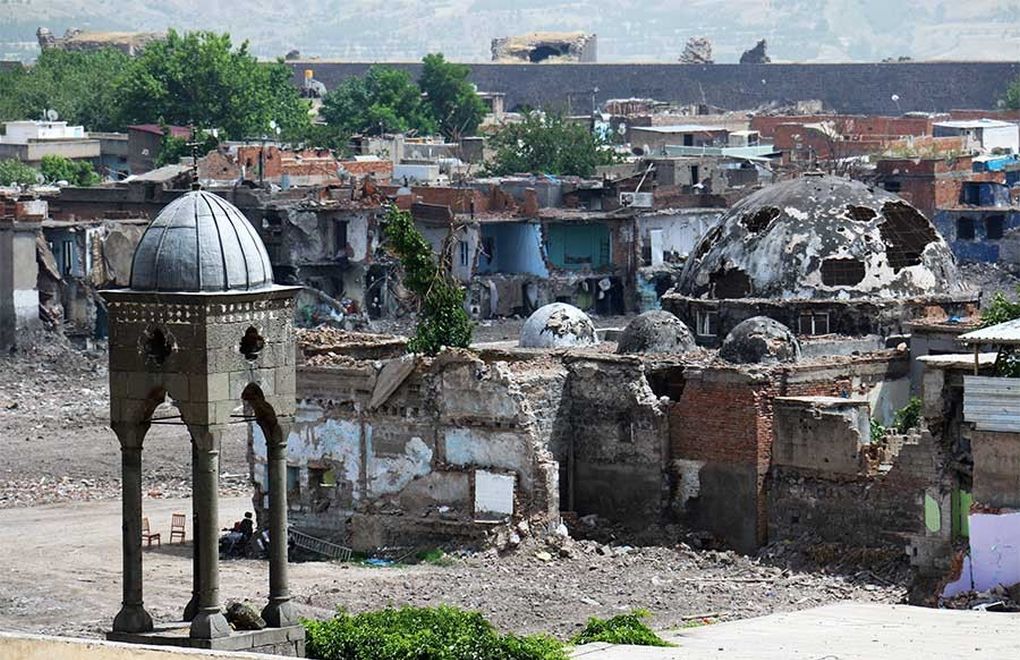Photo: MA/File
Click to read the article in Turkish / Kurdish
Curfews for a total of 2,926 days were declared in 11 provinces with a predominantly Kurdish population, according to a report by the Migration Monitoring Association.
This means, on average, at least one district, neighborhood or a village in those provinces had been under curfew every day for five years from 2015.
The report includes 439 declarations of curfews and "temporary special security zones" in the provinces of Diyarbakır, Batman, Bingöl, Bitlis, Elazığ, Hakkâri, Mardin, Siirt, Dersim and Muş.
The curfews covered 52 districts, 534 neighborhoods, 347 hamlets and 240 locations, the report notes.
It was also observed that the population growth rate decreased in the areas where curfews were in place.
The government started imposing curfews in the region during the 2015 conflict, which began after the end of what was called the "resolution process" to the Kurdish question.
After a relatively low-intensity period during the resolution process, the conflict between the Kurdistan Workers' Party (PKK) and the state escalated after the June 2015 election, this time in the form of urban warfare in several cities.
While urban clashes ended in early 2016, the government continued the widespread implementation of curfews and designating areas as "temporary security zones" in the region.
Figures by provinces
Batman: Seven 14-day curfews and temporary military security zones were declared in areas covering the central district, three neighborhoods, 17 villages and five hamlets.
People living in the districts of Sason (30,911 pop. as of 2019), Hasankeyf (6,859 ), Kozluk (60,375) were directly affected by the curfews.
Bingöl: Seven 37-day curfews were declared in areas covering 10 neighborhoods and 54 villages in Genç district, which had a population of 34,181 people as of 2019.
Bitlis: Curfews were declared 60 times in areas covering five districts, 22 neighborhoods, 160 villages and 65 hamlets and were in place for a total of 938 days.
People living in the central district (348,115 pop. as of 2019), Tatvan (93,189), Hizan (33,331), Mutki (31,869), and Güroymak (47,8290) were affected by curfews.
Diyarbakır: Curfews were declared 213 times and had been in place for 837 days in 11 districts, 318 neighborhoods, and 244 hamlets.
People living in the districts of Kocaköy (16,106 pop. as of 2019), Hazro (16,106), Lice (25,222), Hani (32,675), Kulp (35,357), Dicle (37,673), Silvan (86,736), Sur (106,108), Bismil (118, 250), Yenişehir (210,927), and Bağlar (210,927) were directly affected by the curfews.
Elazığ: Two seven-day curfews were declared in areas covering two villages in four hamlets in Karakoçan and Arıcak districts. Also, the mentioned areas were declared special security zones four times.
Hakkari: Curfews were declared 40 times and had been in place for 189 days in three central districts, seven neighborhoods, 37 villages, 10 hamlets and 149 locations. The bans were continued with declarations of special security zones.
People living in the districts of Yüksekova (118,914 pop. as of 2019), Şemdinli (43,886), and Çukurca (16,141) were directly affected by the curfews.
Siirt: Curfews were declared 14 times and had been in place for 21 days in 12 neighborhoods, 91 villages, and two locations in Siirt and its central districts. The bans were continued with declarations of special security zones.
People living in the central district (168,659 pop. as of 2019), Baykan (25,275), Eruh (18,391), Şirvan (22,117) Tillo (4,260) and Pervari (30,858) were directly affected by curfews.
Şırnak: Curfews were declared 15 times in the central district and five districts, eight times in neighborhoods, 11 times in villages and had been in place for 444 days.
Satellite imagery shows about 70 percent of the city was destroyed during the conflict and many residential buildings were destroyed by tank and artillery fire.
During the conflict, 34 people were killed in basements, where they were trapped. Criminal complaints about these peoples' deaths were not prosecuted.
People living in the central district (529,615 pop. as of 2019), Cizre (148,697), Silopi (136,749), İdil (76,993), Beytüşşebap (16,330), and Uludere (44,660) were directly affected by curfews and temporary security zone declarations.
Mardin: Curfews were declared 67 times in eight districts and had been in place for 424 days.
People living in the districts of Nusaybin (108,172 pop. as of 2019), Dargeçit (27,711), Artuklu (178,154), Mazıdağı (36,304), Midyat (114,763), Ömerli (14,026), Derik (61,706), Savur (26,583) were directly affected by curfews.
Muş: Six-day curfews were declared in seven times in 26 neighborhoods, 15 villages and 15 hamlets.
People living in the central district (408,809 pop. as of 2019) Malazgirt (50,926), and Varto (30,897) were directly affected by curfews.
Dersim: Nine-day curfews were declared in five neighborhoods and 44 villages.
People living in the central district (84,660 pop. as of 2019), Ovacık (6,696), Nazimiye (3,189) and Mazgirt (7,778). (RT/VK)




